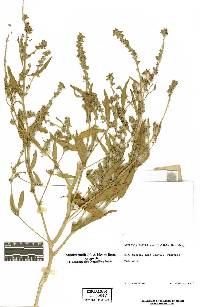Atriplex gmelinii var. gmelinii
|
Atriplex gmelinii var. gmelinii
 (redirected from: Atriplex oatula var. zosterifolia (Hook.) C.L. Hitchc.) (redirected from: Atriplex oatula var. zosterifolia (Hook.) C.L. Hitchc.) |
|
|
Family: Amaranthaceae
[Atriplex gmelini var. zosterifolia (Hook.) Moq., more] |
|





